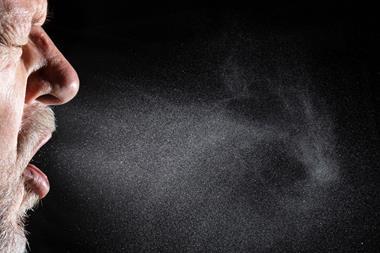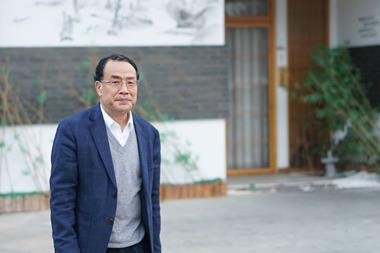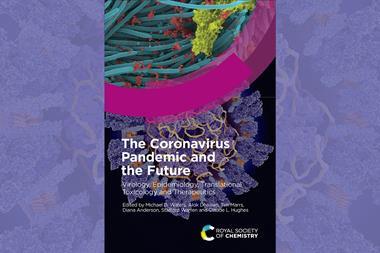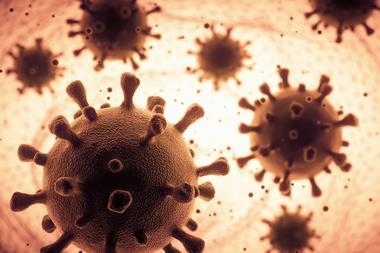A study on Sars-CoV-2 has uncovered a potential new pathway to infection that does not use the ACE2 receptor.
Virus entry can be thought of as a scale with two mechanisms at either end. On one end is receptor-mediated entry. This is where a virus attaching to specific protruding proteins on host-cell surfaces initiates viral genome transfer through the cell membrane. This is understood to be how the infective cycles for several strains of HIV begins. At the other end of the scale, a virus may only need to be in close proximity to the host cell for membrane fusion and subsequent infection to take place. The influenza virus is thought to use this method.
Peter Kasson, based at the University of Virginia in the US, and colleagues wondered where Sars-CoV-2 sits on this scale so devised a three-stage approach to explore the matter.
First the team demonstrated that Sars-CoV-2 could fuse with model liposomes displaying both proteases and ACE2 receptors. Next, they showed that Sars-CoV-2 fusion occurred with soluble proteases and ACE2 receptors.
In the main, and final, part of the study the team used virus-like particles created by co-expressing certain Sars-CoV-2 proteins. They found that fusion could occur if a virus-type particle was connected to the model lipid surface via DNA tethers, with protease present but in the absence of ACE2 receptors. In other words, membrane fusion could occur when the virus-type particles were in close proximity to the liposomes. This progression of experiments led the researchers to conclude that viral entry can take place without the ACE2 receptor, but that the process is accelerated when it is present.
Kasson says the findings have ‘important implications for the ability of Sars-CoV-2 [and] potentially similar viruses to adapt to new host types.’ If Sars-CoV-2, and other viruses, can enter cells without using ACE2, then they can perhaps mutationally adapt to use other receptors ‘[and] so it [flattens] out the fitness landscape for adaptation across cell types or host species.’ It also supports the observation that Sars-CoV-2 is ‘tremendously plastic in its ability to adapt to different host requirements for entry,’ adds Kasson.
James Munro, an expert in virus–host interactions at UMass Chan Medical School in the US, says this is another example of virus receptor-accelerated entry to cells and that it ‘contributes to an emerging model in which viral glycoproteins are intrinsically capable of promoting membrane fusion.’ In a more global view of the field, Munro says ‘the conventional wisdom is that the need for receptors during virus entry is absolute … this work, and other similar [studies], suggest a more nuanced model where the functionalities of viral glycoproteins are tuned by environmental factors, including the presence of a receptor. But the ability to promote membrane fusion is intrinsic to the glycoprotein. Further investigation into the generality of this new idea will be an exciting area of development in the future.’
References
This article is open access
M Cervantes et al, Chem. Sci., 2023, 14, 6997 (DOI: 10.1039/d2sc06967a)












No comments yet